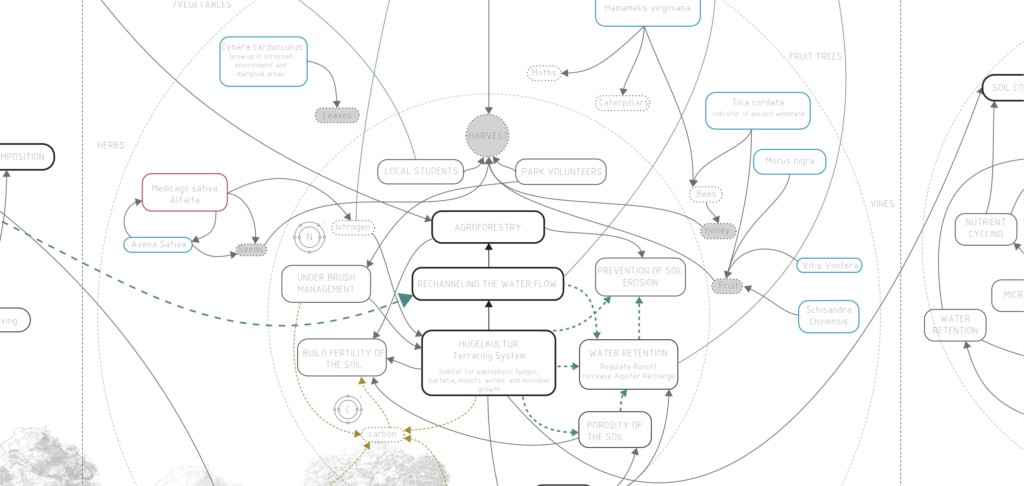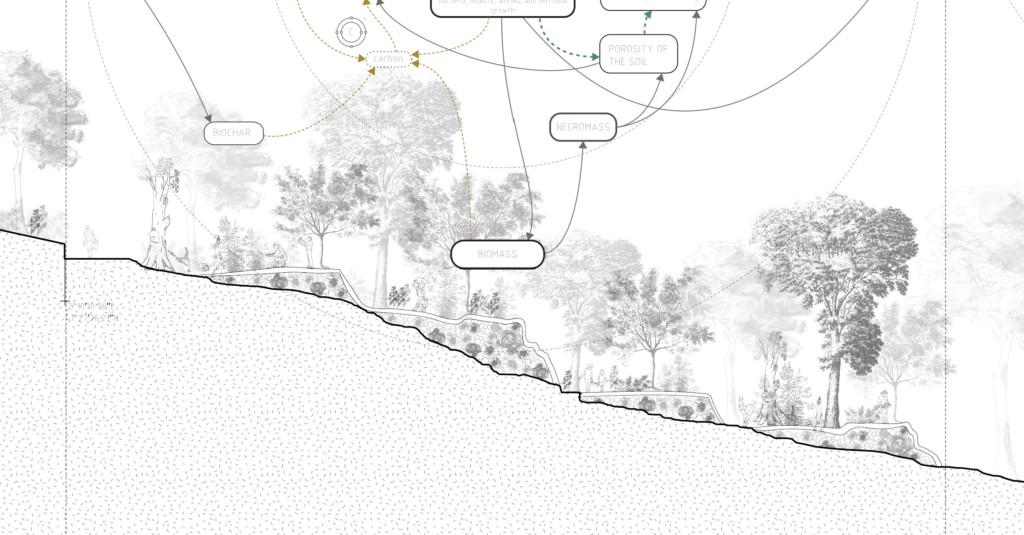Riparian Cascade is an ecological intervention utilizing agroforestry and advanced monitoring methods to set off a trophic cascade in order to restore a mature timber habitat in the eastern section of Collserola Park.
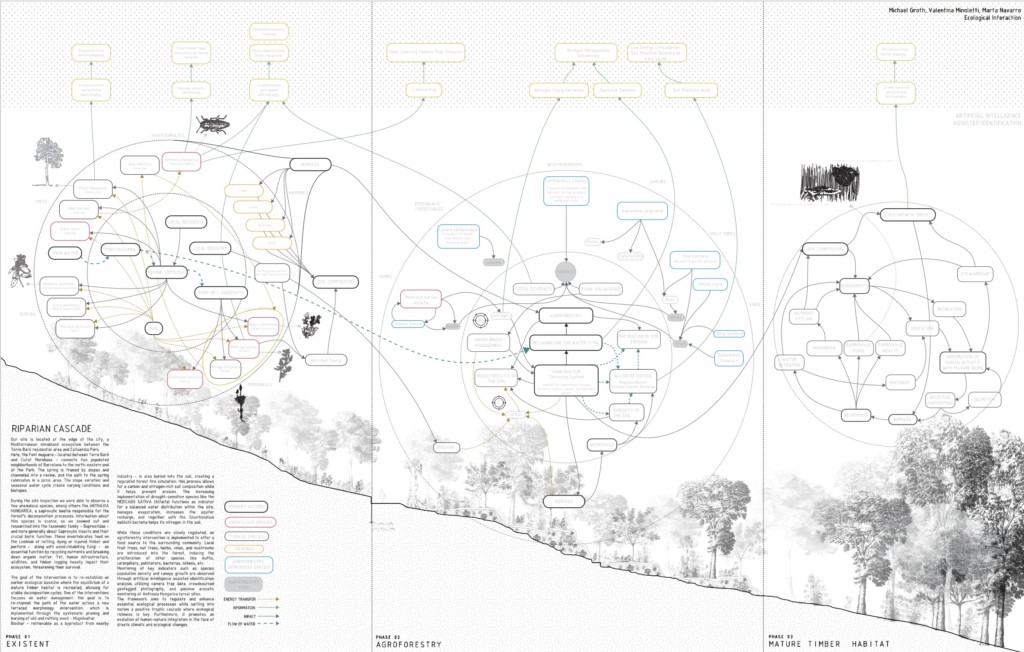
Diagram of the Riparian Cascade intervention
The Site
Our site is located at the edge of the city, a Mediterranean shrubland ecosystem between the Torre Barò residential area and Collserola Park.
Here, the Font Muguera – located between Torre Baró and Ciutat Meridiana – connects two populated neighborhoods of Barcelona to the north-eastern end of the Park. The spring is framed by slopes and channeled into a ravine, and the path to the spring culminates in a picnic area. The slope variation and seasonal water cycle create varying conditions and biotopes.
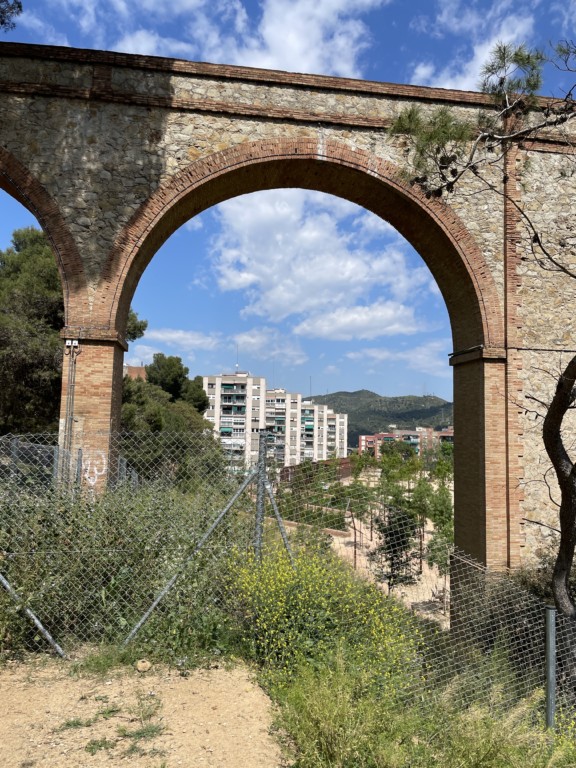
Aqueduct and human habitations at the edge of the site.
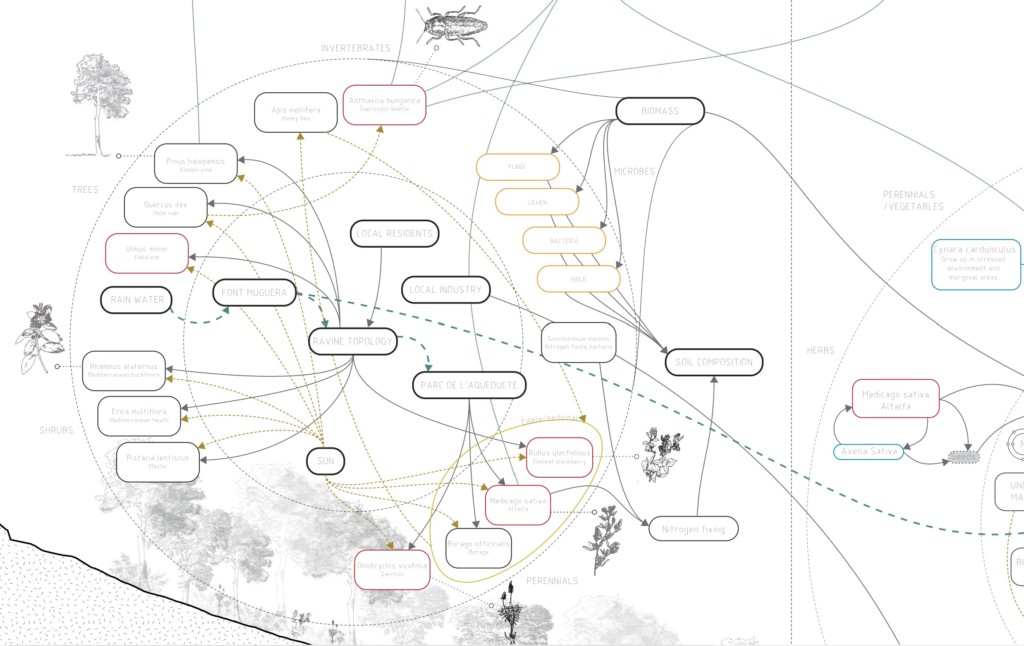
Indicator Species
During the site inspection we were able to observe a few anomalous species, among others the ANTHAXIA HUNGARICA, a saproxylic beetle responsible for the forest’s decomposition processes. Information about this species is scarce, so we zoomed out and researched into the taxonomic family – Buprestidae – and more generally about Saproxylic insects and their crucial biotic function. These invertebrates feed on the cambium of rotting, dying or injured timber and perform – along with wood-inhabiting fungi – an essential function by recycling nutrients and breaking down organic matter. Yet, human infrastructure, wildfires, and timber logging heavily impact their ecosystem, threatening their survival.
The Intervention
The goal of the intervention is to re-establish an earlier ecological baseline where the equilibrium of a mature timber habitat is recreated, allowing for stable decomposition cycles. One of the interventions focuses on water management: the goal is to re-channel the path of the water across a new terraced morphology intervention, which is implemented through the systematic pruning and burying of old and rotting wood – Hügelkultur. Biochar – retrievable as a byproduct from nearby industry – is also buried into the soil, creating a regulated forest fire simulation: this process allows for a carbon and nitrogen-rich soil composition while it helps prevent erosion. The increasing implementation of drought-sensitive species like the MEDICAGO SATIVA (Alfalfa) functions as indicator for a balanced water distribution within the site, manages evaporation, increases the aquifer recharge, and together with the Sinorhizobium melilotii bacteria helps fix nitrogen in the soil.
While these conditions are slowly regulated, an agroforestry intervention is implemented to offer a food source to the surrounding community. Local fruit trees, nut trees, herbs, vines, and mushrooms are introduced into the forest, inducing the proliferation of other species like moths, caterpillars, pollinators, bacterias, lichens, etc.
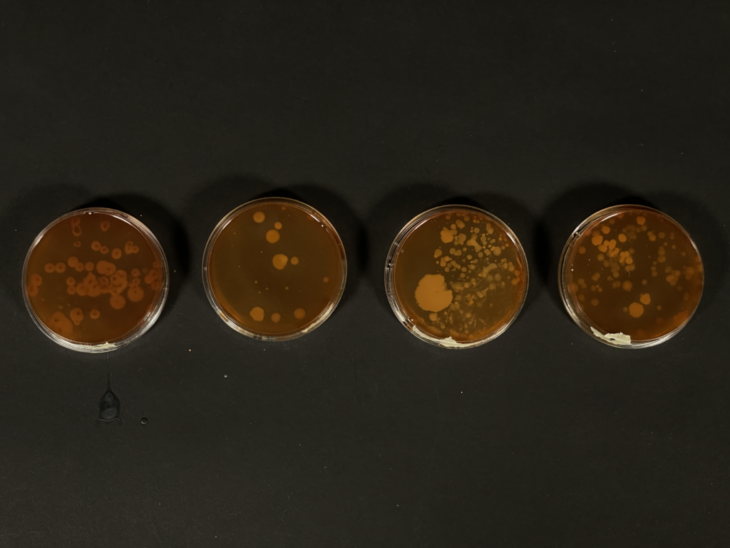
Microbial samples taken from the site
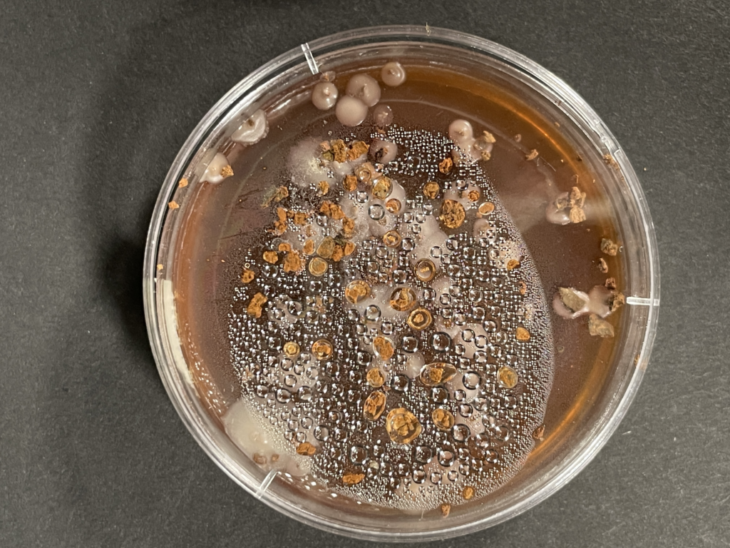
Cultures from soil sample
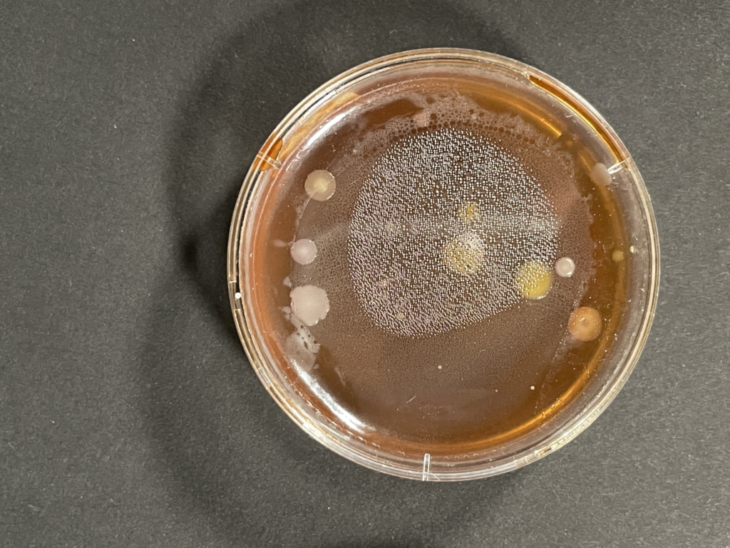
Cultures from water sample
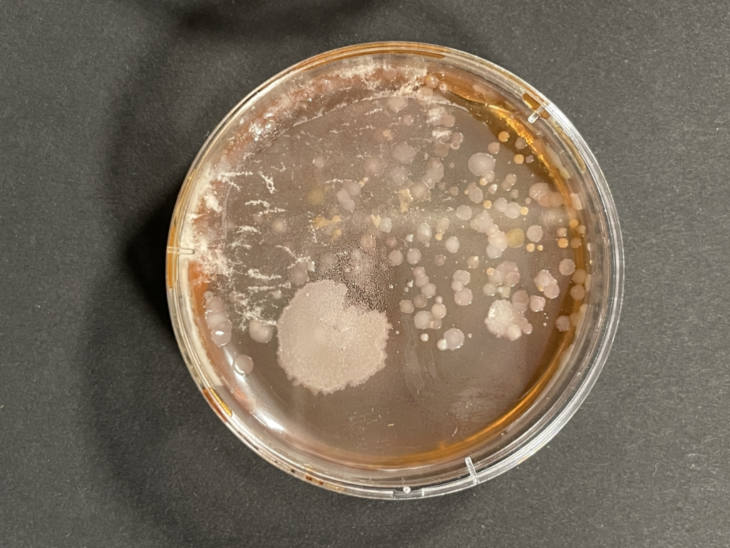
Cultures from water sample
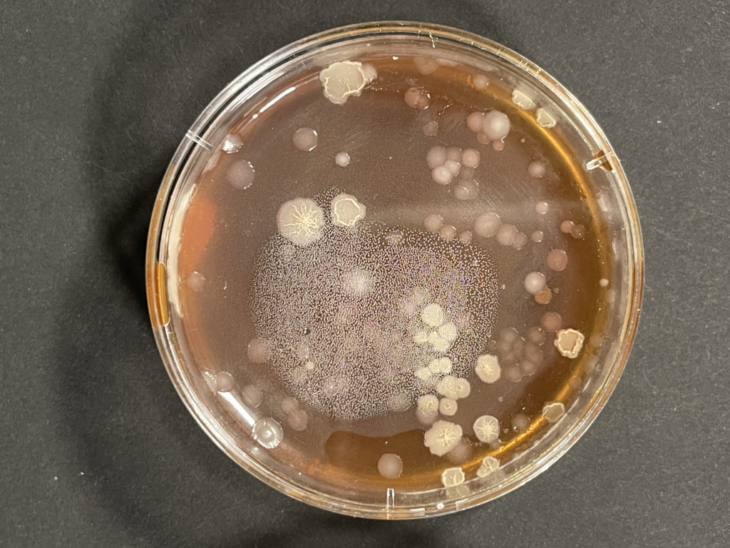
Cultures from water sample
Monitoring Changes Over Time
Monitoring of key indicators such as species population density and canopy growth are observed through artificial intelligence assisted identification analysis utilizing camera trap data, crowdsourced geotagged photography, and passive acoustic monitoring at Anthaxia Hungarica larval sites.
The framework aims to regulate and enhance essential ecological processes while setting into motion a positive trophic cascade where ecological richness is key. Furthermore, it promotes an evolution of human-nature integration in the face of drastic climatic and ecological changes.
Riparian Cascade is a project of IAAC, the Institute for Advanced Architecture of Catalonia, developed during the Master in Advanced Architecture (MAA01) 2021/22 by students: Michael Groth, Valentina Minoletti, Marta Navarro Lopez; Faculty: Jonathan Minchin.
